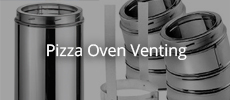Originally posted by daidensacha
View Post
For the sludge: I think this is what could then be sold/used as fireclay if I understand the comments here correctly (after sieving very finely, and drying). I wouldn't use it wet on calciumsilicate due to its dislike for water (the calciumsilicate becomes 'pulpy'). If you have some kind of waterproof layer or the waterproof insulation material you might consider using it wet.
After the layer became too large I took it out with a bucket, I'm up to two buckets by now, but they take ages to dry... not sure if I'll do anything with it or in the end it will just go to the construction trash section of the recycling center.





 ) and/or hammer all of them in place. I did this, but apparently not hard enough. In the end however, all of this is fixable with the grinder
) and/or hammer all of them in place. I did this, but apparently not hard enough. In the end however, all of this is fixable with the grinder  .
.
Leave a comment: